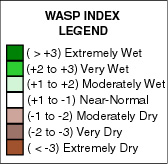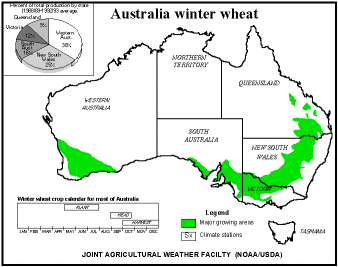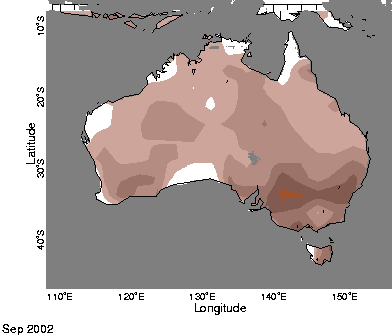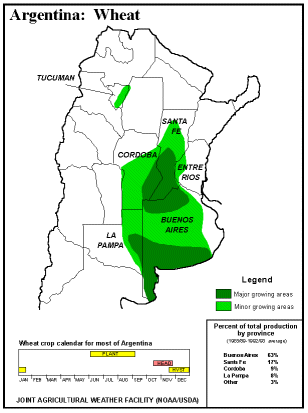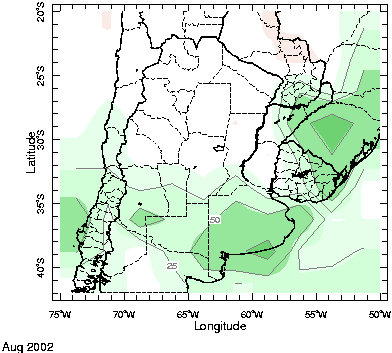
| ||||||||||||
|
Sustained drought conditions are expected to reduce wheat production in Australia, Canada, and the United States this year, some of the major wheat producing and exporting countries of the world, allowing for other regions to export a greater share of the total world wheat market, according to reports released by the United Nations Food and Agriculture Organization and the U.S. Department of Agriculture in September and October. North America Unusually dry conditions, as shown by the WASP index below, persisted
for several months in the wheat growing areas of Canada, contributing to
the large estimated decline in wheat production this year. According
to statistics released by the USDA Foreign Agricultural Service in September*,
this year's production is forecast to be 15.4 million tons, the worst in
28 years, and down from 20.6 million tons last year. Canadian wheat
exports are also expected to fall to 9.5 million tons, down from nearly
16.8 million tons last year. Production in the United States is estimated
at about 45.9 million tons, down from about 53.3 million tons last year,
which would make this the smallest wheat harvest for the United States
since 1972. However, wheat exports from the United States are expected
to be around 26.0 million tons, nearly the same as last year.
Australia Australian wheat production is estimated to reach only 13.5 to 15 million
tons this year, down from 24 million tons last year, due in large part
to the unrelenting drought during the course of the growing season*.
The primary wheat-growing regions of Australia have been especially hard-hit
by drought conditions in recent months (see the WASP Index map below).
Argentina While rainfall at the end of August was reportedly favorable for the
planting of the wheat crop in the primary wheat growing province, Buenos
Aires, the total acreage planted in Argentina declined somewhat due to
difficult economic conditions (FAO).
Wheat exports from Argentina for 2002/2003 are forecast to reach only 9.0
million tons, down from nearly 11.5 million tons in 2001/2002*.
Summary According to USDA estimates*, about 99.7 million tons of wheat will
be traded world-wide in the 2002/2003 market year, down from about 107.4
million tons the previous year. While exports from the U.S., Canada,
Argentina, Australia, and the EU, the five largest exporters, will be down
nearly 25% from last year, the harvest in Russia, Ukraine, and Kazakstan
is expected to be the largest since the breakup of the U.S.S.R. Exports
from these three countries are expected to reach 15.5 million tons, allowing
them to grab a larger share of this year's wheat market.
*Grain: World Markets and Trade, United States Department of Agriculture, Foreign Agricultural Service, Circular Series FG 09-02, September 2002. |


